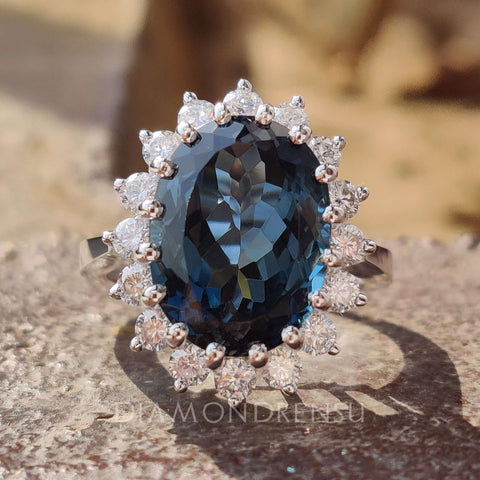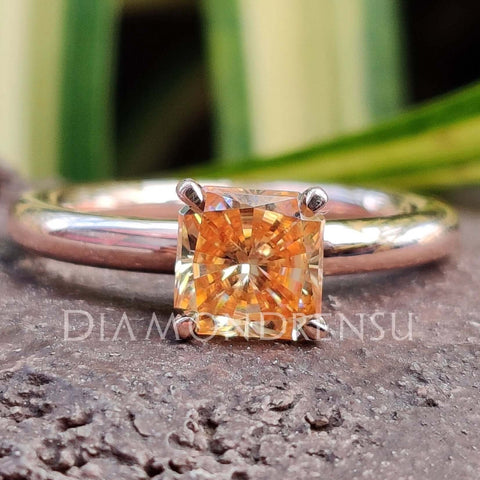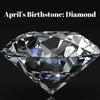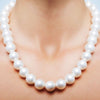
Blue Topaz vs Aquamarine: Understanding the Differences
When it comes to precious gemstones, both blue topaz and aquamarine boast shades of mesmerizing blue that captivate the eye and are popular choices for jewelry. Although they share a similar hue, these gemstones have distinct properties that set them apart. Blue topaz is known for its brilliance and variety of blue tones that range from pale to deep, vivid shades. On the other hand, aquamarine, a variety of beryl, is famed for its delicate blue to greenish-blue color reminiscent of seawater.
Understanding the value and characteristics of these gemstones is key when selecting a piece for your collection or as a gift. Aquamarine commands a higher price due to its rarity and natural coloring, whereas blue topaz, although stunning, is more readily available and commonly treated to achieve its blue coloration. The clarity of aquamarine is also a hallmark of its value, often found in larger, more transparent specimens compared to blue topaz.
Table Of Contents
Your choice between blue topaz and aquamarine can also be influenced by their differing properties. Aquamarine scores slightly higher on the Mohs scale of hardness, which measures the resistance to scratching, meaning it can be more durable for everyday wear. In contrast, blue topaz is often preferred for its affordability and the option of selecting from several blue hues, offering versatility for different types of jewelry settings. Whether for an engagement ring, a birthday gift, or a personal treat, the allure of these blue gemstones is undeniable, but your preference will ultimately depend on your taste and what you value most in a gemstone.
Defining Blue Topaz and Aquamarine
In your quest to understand the nuances between blue topaz and aquamarine, appreciate that both are prized gemstones with unique characteristics rooted in their formation, composition, and visual appeal.
Formation and Composition
Blue topaz is a silicate mineral of aluminum and silicon, with the chemical formula Al2SiO4(F,OH)2. It often acquires its blue hue through treatment methods, as natural blue topaz is quite rare. The presence of fluorine in its formation is responsible for its range of colors, from sky blue to deep blue.
Aquamarine, on the other hand, belongs to the beryl family, which includes other gemstones like emerald. Its chemical composition is Be3Al2Si6O18 and typically forms in pegmatites. The blue to pale blue or even blue-green color is due to the presence of iron. It’s the iron that gives aquamarine its characteristic sea-inspired hues, from pale blue, reminiscent of a clear sky, to deeper blue, evoking the depths of the ocean.
Visual Characteristics
The visual allure of blue topaz lies in its clarity and luster, which can range from transparent to translucent. Topaz in general can also exhibit a glass-like luster, which, when combined with its often vibrant tones, creates a coveted sparkle among blue gemstones.
Aquamarine is also renowned for its clarity, commonly found free of inclusions which enhances its glistening appearance. The stone's color can vary from a light, almost transparent pale blue to a more saturated blue with a green tint. Its crystal structure contributes to its vitreous luster, which along with its color, presents an image of calm and serenity, much like a tranquil sea.
Geographical Origin

Understanding the geographical origin of gemstones can enhance your appreciation of their beauty and value. Specific locations are renowned for the mining of blue topaz and aquamarine, each with a rich history of discovery and trade.
Top Mining Locations
For blue topaz, one of the prime locations where it is mined is Brazil. This South American country is known for an abundance of natural resources, including gemstones of remarkable quality and size. Blue topaz is also found in Nigeria, Sri Lanka, and Madagascar, each contributing to the global supply with distinctive hues and clarity.
Aquamarine, a gemstone cherished for its sea-water color, primarily comes from Brazil as well. Additionally, significant deposits are located in Africa, with countries like Madagascar and Nigeria being important sources.
Historical Sources
Ancient civilizations held gemstones in high esteem. The Ancient Greeks and Egyptians, for example, treasured these gems for both their beauty and supposed mystical powers. The Ancient Greeks believed that aquamarine was the treasure of mermaids and thus had the power to protect sailors. Conversely, historical sources indicate that topaz was used by the Egyptians near the Red Sea as a gemstone with protective qualities.
If you are fascinated by the legacy and locales of these blue-hued gems, their origins add another layer to their story—one that has been shaped by the geography as much as by the hands that have cherished them through the ages.
Physical and Metaphysical Properties
| Property | Blue Topaz | Aquamarine |
|---|---|---|
| Color | Blue topaz occurs in various shades of blue, from pale sky blue to deep London blue. | Aquamarine is typically light blue to greenish-blue, resembling the colors of the ocean. |
| Hardness (Mohs) | 8 | 7.5 - 8 |
| Crystal System | Orthorhombic | Hexagonal |
| Transparency | Transparent to translucent | Transparent to translucent |
| Luster | Vitreous | Vitreous |
| Specific Gravity | 3.49 - 3.57 | 2.66 - 2.80 |
| Metaphysical Properties | Believed to enhance communication and creativity. Associated with calming and soothing energies. | Thought to bring courage, reduce stress, and enhance spiritual awareness. Symbolizes tranquility and the ocean. |
| Birthstone | December | March |
| Common Treatments | Blue topaz is often irradiated and heat-treated to enhance its color. | Heat treatment is commonly used to improve the color of aquamarine. |
| Occurrence | Found in various locations, including Brazil, Russia, and the United States. | Commonly found in Brazil, Nigeria, Madagascar, and other locations. |
In this section, you'll learn about the crucial differences in hardness and durability between blue topaz and aquamarine, as well as their unique symbolism and metaphysical significance in various cultures.
Mineral Hardness and Durability
Blue topaz and aquamarine are both renowned gemstones prized for their clarity and beauty, with a hardness that makes them suitable for various types of jewelry. On the Mohs scale of hardness, blue topaz ranks at an 8, making it a very hard and durable stone. Aquamarine is slightly less hard at a 7.5 to 8, which still makes it resistant to scratches and daily wear.
- Blue Topaz:
- Hardness: 8 on the Mohs scale
- Durability: Highly resistant to scratches
- Aquamarine:
- Hardness: 7.5 to 8 on the Mohs scale
- Durability: Good resistance, suitable for everyday wear
Symbolism and Significance
The symbolism and metaphysical properties of gemstones often hold great significance for those who believe in the power of crystals. Blue topaz is believed to represent communication and is associated with the throat chakra, making it an ideal choice if you seek to express yourself with clarity.
Aquamarine, known as the stone of courage, embodies the serenity and happiness of calm waters. As the birthstone of March, it is often connected to hope, protection, and wisdom. In terms of affordability, aquamarine can vary greatly depending on the quality, but generally, high-quality specimens can be pricey due to their association with the water of the sea and their captivating color.
- Blue Topaz:
- Metaphysical Properties: Enhances clear communication and aids the throat chakra
- Symbolism: Associated with wisdom and serenity
- Aquamarine:
- Metaphysical Properties: Encourages courage, protection, and inner peace
- Symbolism: Birthstone of March, symbolizes hope and the purity of crystalline waters
Gemstone Treatments and Enhancements

Understanding the nuances of gemstone treatments is crucial for appreciating the true value and beauty of stones like blue topaz and aquamarine. These treatments can alter color and clarity, impacting both appearance and market value.
Color Enhancement Techniques
Various color enhancement techniques are applied to enhance the vibrancy of gemstones. Blue topaz, often a pale stone, commonly undergoes heat treatment and irradiation to achieve a rich blue hue. Through this process, the interaction of heat and iron within the topaz can result in shades ranging from sky blue to Swiss blue and London blue.
In contrast, aquamarine’s serene blue to blue-green color is usually natural, but it can also be enhanced. Heat treatment is the primary method used to remove greenish tones, resulting in a more desirable blue shade. This technique can deepen the color due to changes in the gemstone's internal structure involving iron.
Electron beam irradiation is another technique, especially important for color enhancement in gemstones. The electrons can alter the crystal structure, thus deepening the existing color. Such treatments can transform colorless topaz into varieties that resemble aquamarine, offering consumers a broad spectrum of color options at different price points.
Impact on Clarity and Luster
The clarity and luster of your gemstone can be significantly affected by treatments. With heat treatment becoming a common practice, it’s critical to understand that while it can improve clarity by reducing visible inclusions, it may also weaken the gem, affecting durability.
For example, blue topaz is often heat-treated to not only induce the desired blue color but also to improve clarity. However, treated gemstones need careful handling to maintain their enhanced luster. Prolonged exposure to sunlight can gradually reverse enhancements, leading to a diminishing of the vibrancy you cherish.
Meanwhile, treatments like irradiation rarely affect the clarity or luster of aquamarine. Instead, these processes solidify its color, making it a choice gem for its natural, oceanic sheen and clarity. Aquamarine, valued for its transparent, watery appearance, can have its clarity emphasized through careful cutting techniques which, when combined with its natural luster, makes it a truly desirable and valuable gem.
Note: Always verify if your gemstones have been treated, as this knowledge is pivotal when determining care, value, and authenticity.
Buying Considerations for Jewelry
When selecting jewelry with gemstones like blue topaz or aquamarine, it's essential to assess quality and authenticity, understand price variations for budgeting, and choose a cut that enhances the stone's natural beauty.
Evaluating Quality and Authenticity
To ensure the highest quality in your purchase, examine the clarity and presence of inclusions in the gemstone. Aquamarine should display a clear, pale blue color, whereas blue topaz exhibits a deeper blue hue. Utilize tools such as a diamond tester or verify the refractive index to confirm the gem's authenticity, as these are indicators of legitimacy within the jewelry industry.
Price Comparison and Budgeting
Aquamarines are often pricier due to their rarity, which saw a significant price increase recently. Contrarily, blue topaz is a more affordable option, maintaining value while being accessible for various budgets. Whether you're considering an engagement ring or another form of jewelry, align your choice with both the price you can manage and the gemstone's intrinsic worth.
Choosing the Right Cut
The cut of a gemstone greatly influences its appearance and value. Popular cuts like emerald, princess, or oval can accentuate the stone’s features, providing an elegant look in jewelry pieces such as engagement rings. Your selection should complement both the gem's properties and personal style preferences to make your purchase truly special.
Cultural and Historical Context

When you explore the cultural and historical context of blue topaz and aquamarine, you'll uncover a rich tapestry of symbolism and tradition. These gems, hailing from the beryl family, carry distinct meanings and have adorned jewelry for centuries, solidifying their roles in history and culture.
Symbolism across Cultures
Blue topaz and aquamarine resonate with profound symbolism. Blue topaz, the December birthstone, represents strength and intelligence. It's thought to foster clarity in your thoughts and actions. Aquamarine, the birthstone for March, is imbued with the essence of the sea, signifying hope and eternal youth. In ancient times, it was believed that aquamarine would instill courage in those who wore it and could even cure heart, liver, and stomach diseases.
In Sanskrit, aquamarine is known as "the ocean's stone," echoing its connection to the tranquility and purity of water. You may find these stones in engagement rings where aquamarine embodies enduring love, while blue topaz is said to signify sincere emotional attachment and the promise of a clear, strong relationship.
Historical Use in Jewelry
The historical use of these gemstones is vast and varied. The ancient Greeks and Egyptians were known to engrave aquamarine with the likeness of Poseidon or Neptune to protect sailors on voyages. Aquamarine's use in engagement rings dates back to the Greeks, who valued it for its ability to ensure a good marriage.
Blue topaz was often confused with aquamarine in history due to their color similarity. However, blue topaz has had its own place in history and folklore. The Egyptians saw it as a symbol of Ra, the sun god, attributing it with the power of healing and protection. In contrast, the Greeks believed it could make the wearer invisible in times of emergency. It's a testament to the endurance of these gemstones in jewelry that their allure remains strong to this day.
Care and Maintenance of Blue Topaz and Aquamarine

When it comes to the care and maintenance of your blue topaz and aquamarine gemstones, understanding their durability and potential for cleavage is essential. Blue topaz is relatively hard, ranking 8 on the Mohs hardness scale, but it has perfect cleavage, which means it can split along distinct planes. This can happen if struck with sufficient force. In comparison, aquamarine is slightly less hard, ranking between 7.5 to 8, but it has imperfect cleavage, making it less susceptible to splitting.
Daily Wear and Precious Care:
- Avoid subjecting both gemstones to sharp blows or rough handling.
- Remove jewelry before engaging in vigorous activities to prevent scratching or chipping.
Cleaning Blue Topaz and Aquamarine:
- Use a mild soap solution and a soft-bristled brush to gently clean your gemstones.
- Rinse thoroughly with water to remove any soap residue.
- Pat dry with a lint-free cloth, ensuring your gemstones are completely dry.
Professional Insight:
- Consult with jewelers or professional gemstone cleaners for deep cleaning or when faced with stubborn residue on your gemstones.
Storage:
- Store your blue topaz and aquamarine jewelry separately from other jewelry to avoid scratches.
- Wrap the gemstones in a soft cloth or place them in a padded box when not in use.
Temperature and Chemical Exposure:
- Protect these gemstones from prolonged exposure to high temperatures or sudden temperature changes.
- Keep away from harsh chemicals, including perfumes and cleaning agents, which can damage the surface or affect the gemstone's color.
By following these guidelines, you will ensure that your blue topaz and aquamarine gemstones maintain their luster and beauty for years to come.
Market Trends and Demand

In the realm of colored gemstones, your choice often reflects trends and potential value. Blue topaz and aquamarine hold unique positions in the market, with specific factors affecting their popularity and investment viability.
Contemporary Popularity
Blue topaz has found its niche in the jewelry industry thanks to its affordability and wide color range, making it a frequent choice for those seeking an eye-catching gemstone without the high price tag of rarer stones. Its ability to be treated to display a rich blue hue contributes to its ongoing demand, particularly in engagement rings and other fine jewelry accessible on platforms like Amazon and Etsy. In comparison, aquamarine, with its naturally subtle blue tones, is less common and typically commands a higher price, a reflection of its rarity.
Investment Potential
When considering investment potential, aquamarine stands out due to its scarcity; high-quality specimens are sought after by collectors and can retain or increase in value over time. Blue topaz, while affordable and popular, does not generally hold the same long-term value, partly due to its availability. However, for you, as an investor in the gemstone market, factors such as rarity, demand, and market saturation must be weighed. While blue topaz may not offer the same rarity-driven value increase as aquamarine, its consistent demand within the jewelry industry ensures a stable market presence.
Frequently Asked Questions
In this section, you'll find detailed answers addressing common queries about blue topaz and aquamarine to help you understand their differences, values, and unique properties.
What are the distinguishing characteristics between blue topaz and aquamarine?
Aquamarine and blue topaz may appear similar at first glance, but they can be differentiated by their hardness, weight, and color nuances. While aquamarine has a distinct light blue to blue-green color, blue topaz is generally a more vivid blue and can often be found in darker tones. Aquamarine is a variety of beryl with a hardness of 7.5 to 8 on the Mohs scale, whereas blue topaz registers an 8.
How does the value of blue topaz compare to that of aquamarine?
Aquamarine generally commands a higher price than blue topaz due to its rarity and association with the beryl family, which also includes emerald. The value of aquamarine increases with the intensity of its color and clarity, while the price of blue topaz is typically more affordable and influenced by the treatments it has undergone to enhance its color.
What methods can be used to authenticate a true aquamarine stone?
To authenticate an aquamarine, experts often look for its characteristic inclusions, subtle color zoning, and examine its refractive properties. Tools like a jeweler's loupe or microscope can reveal aquamarine's unique internal patterns, distinguishing it from imitations or other gemstones like blue topaz.
What is the significance and meaning associated with blue topaz?
Blue topaz is often associated with learning, understanding, and creative inspiration. It is believed to have soothing and calming properties, and is linked to clear communication through its association with the throat chakra. The gemstone is also the birthstone for December, making it an especially personal choice for those born in that month.
Which color of topaz is considered the most valuable?
The most valuable color of topaz is called Imperial Topaz, which exhibits a vibrant orange-pink hue. However, among the blue varieties, the deep and intense colors of London Blue Topaz are typically more prized and, as such, may command higher prices than the lighter shades such as the Swiss Blue Topaz.
In what ways do the properties of Swiss Blue Topaz differ from those of London Blue Topaz?
Swiss Blue Topaz and London Blue Topaz differ primarily in their color saturation and treatment process. Swiss Blue Topaz features a lighter, more vibrant sky blue color treated by both heat and radiation, while London Blue Topaz boasts a darker, richer azure blue, achieved through a longer irradiation process followed by a controlled heating stage. The two also differ in rarity and value, with London Blue Topaz being the more expensive due to its deeper color and increased treatment time.
Checkout some of our top collections:













